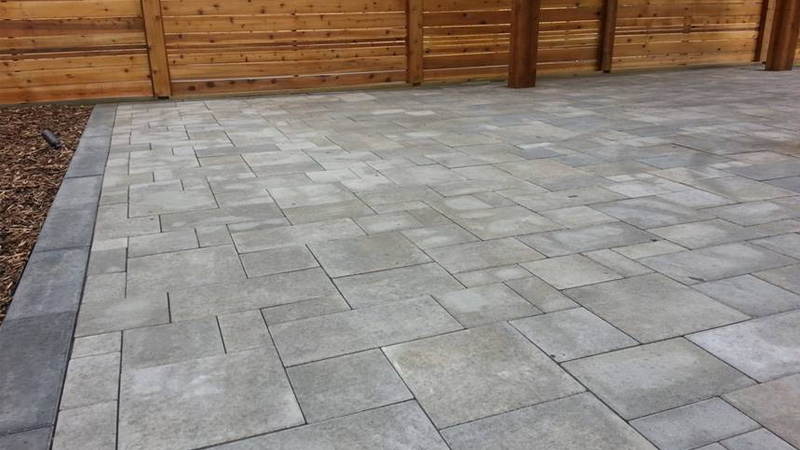Interlocking Pavers vs. Poured Concrete
With the spring and summer season upon us, you may be considering a new patio, walkway, or driveway for your home. There are 2 common options to choose for this – poured concrete or interlocking pavers. The following article looks at the pros and cons of both to help guide you in the right direction to make a choice based on your preference and budget.
Interlocking Pavers
Interlocking concrete paver areas are built by “interlocking” different sizes of individual concrete pavers, based on your preference of pattern, colour, and size. The typical paver thickness used is 2.5” inches for most walkways and patio areas with pedestrian traffic – driveways are often built with a thicker 3”+ thick paver to support a load.
The base for paver areas is built to the same standard as for a concrete patio or pathway. This includes excavation of the area, install and compaction of a road crush base (typically 4-6”), followed by a screeding layer to set the pavers in. Once the install is complete and final setting of the pavers is done, a matching colour of polymeric sand is infill in the joints to provide a water-tight seal on the patio. This will also help to prevent weeds from growing through.
Poured Concrete
The alternative to pavers is poured or placed concrete, with different finishing effects available. The preparation of the base is the same as with a paver patio. Your average patio and walkway slab is 3.5” – 4” thick, with a driveway sometimes a little thicker depending on the scenario (usually, in place of a thicker slab, the rebar reinforcement is spaced closer together).
As far as price point is concerned, your average paver patio is around 65%-75% higher in price than an exposed concrete slab patio. If you are working within a budget, concrete will likely be your better option. Aside from price, there are a few other factors to consider when making your selection:
|
Concrete |
Pavers |
|
| Price |
X |
|
| Customizing (colour, texture, pattern) |
X |
|
| Durability/Longevity* |
X |
|
| Maintenance |
X |
X |
| Curb appeal** |
X |
X |
*Concrete is very durable and strong, but over time, it will develop cracks due to the frost freeze and thaw cycle we have. Pavers, due to their nature of being individual units, may heave and settle as one area but will not crack. If damage did occur to an individual paver, is it as simple as pulling out the old paver and replacing with a new one.
**Tie for this one, since both can offer excellent curb appeal and will add to your landscape if installed properly. While there are more options for paver types and colours, concrete can also have colour either mixed with the batch or used on top with a stamped effect (gives a slate stone look)
Still unsure of which way to go, or unsure of what would be the best application for your space? Feel free to give us a call or send us an email and we would be more than happy to help offer advice!


Got something to say?